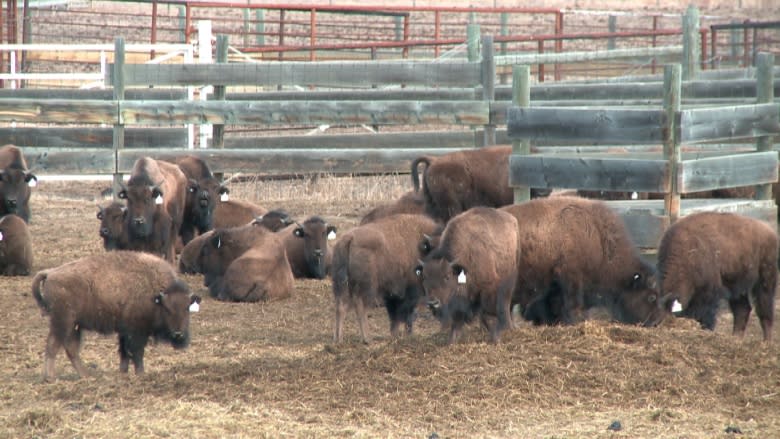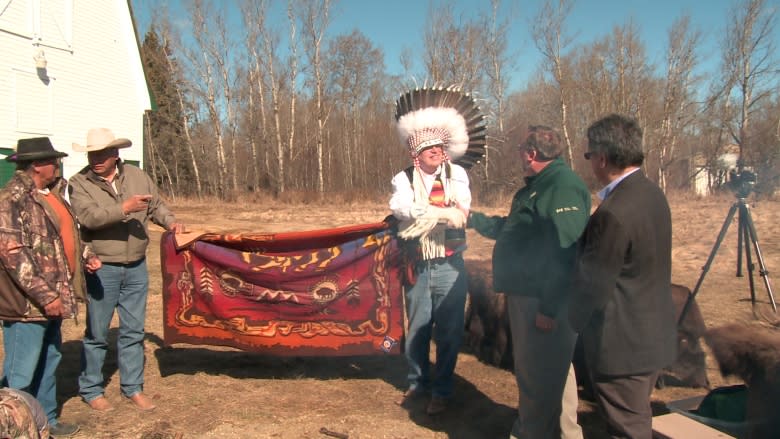Elk Island bison headed home to Montana's Blackfeet Nation
It's a homecoming over a century in the making for some Albertan bison.
On April 4, 87 bison will make the trip from central Alberta back to the Blackfeet Nation reservation in Montana.
The calves are descendants from the Pablo-Allard herd, which has roots in the very same reservation the bison are headed to. The origins of the herd date back to 1873 when Samuel Walking Coyote caught several calves after a hunt on Blackfeet land.
Over time Walking Coyote's herd grew. The majority were sold to Michel Pablo and Charles Allard to form the Pablo-Allard herd. The herd would become the largest in the United States and was used to restock the country's conservation herds.
In the early twentieth century, Pablo sold his bison to the government of Canada. In 1912 the last shipment was sent to Elk Island National Park.
Now the herd is going home.
The transfer was made possible by a combined effort from Elk Island National Park, the Blackfeet Nation and the Wildlife Conservation Society to repopulate Blackfeet territory in Browning, Mont. That's the region where once thriving populations of bison began disappearing from the landscape in the 19th century when they were hunted to the brink of extinction.
Harry Barnes, the Chairman of the Blackfeet Tribal Business Council, presented a gift of a Pendleton blanket adorned with the image of a bison to Parks Canada.
"This is a historic event between two countries, between two cultures and really between two species, man and buffalo," said Barnes. "We have been very unkind to the buffalo over the last hundred years. We're aiming to make it right."
"We hope this is only the beginning of a truly great relationship."
This is not the first time that Elk Island has transferred bison to the United States, but it is the first time that the bison are being shipped to the Blackfeet Nation Reserve.
Stephen Flemming, the Superintendent of Elk Island, said the bison originating from the Pablo-Allard herd are some of the healthiest on the continent.
"This is a conservation herd that is disease free with pure bison genes." said Flemming. "[They're] really valuable, this is why everyone seeks our animals,"
"We send out each year those animals we can surplus because we have a finite space."
For Barnes the return of the bison is about more than just repopulation. Their return will allow the reservation to teach its youth about the importance of the bison. Barnes said it's a step in the right direction towards the reaffirmation of the Blackfeet culture.
"This return is building on an existing Blackfeet herd and raising the consciousness of our young people about this animal in our culture."
Now that they've completed 60 days of quarantine to ensure they are disease free, the herd will soon be free to roam what was once their ancestral home.



